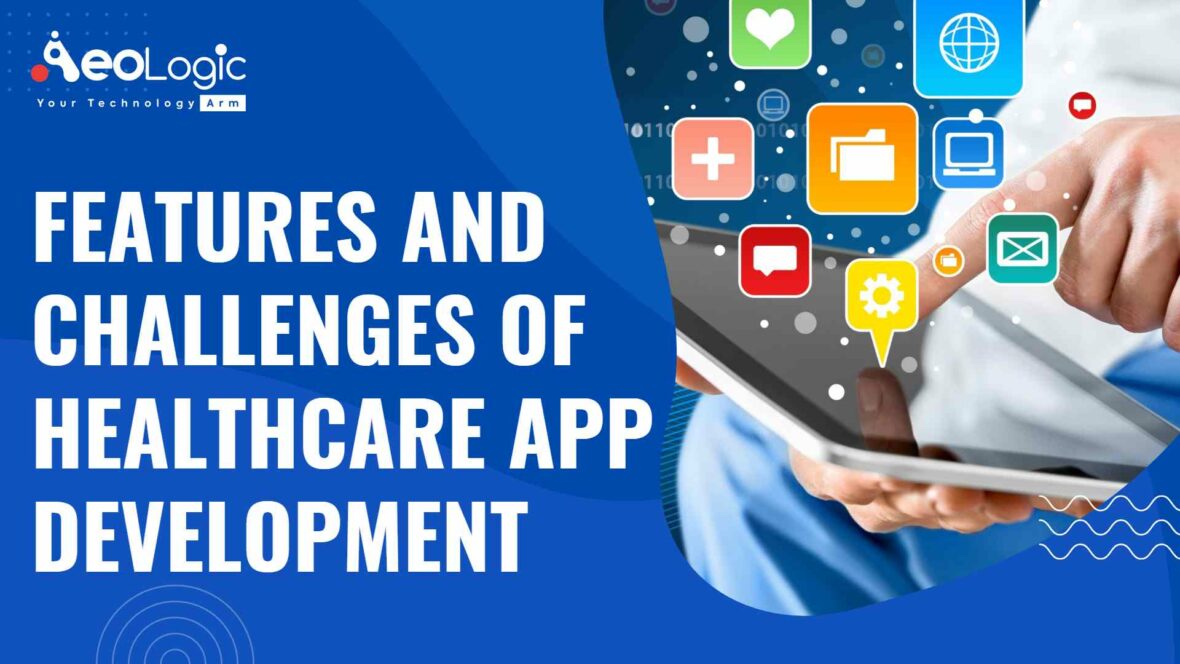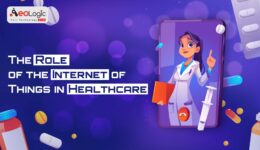The term mHealth (Mobile + Health) was coined in 2003 by Professor Robert S. H. Istepanian. One of the first mHealth systems was uncovered in 2005 at the University of London under the supervision of Professor Brian Woodward. It was an exclusive system that made it possible to monitor the state of human health and transfer data (like blood pressure, blood oxygen saturation, glucose level, and heartbeats) from a mobile phone to any hospital or clinic anywhere in the world. However, there are certain features and challenges of healthcare app development.
There are over 45,000 healthcare apps available on Apple App Store worldwide and a similar number on Google Play 15 years later. Even though different in convenience, usefulness, reliability, and security, there are patterns in progress worth exploring. In this article, we will be pinning down the features and challenges of healthcare app development.
Also read: Role of Technology in Remote Patient Monitoring System
Features of Healthcare App Development
Health Tracking
It is one of the most important features of a patient and doctor-facing app. The functionality allows monitoring of vital signs and health conditions of patients. Such as pulse rate, calorie intake, blood pressure, blood sugar level, calorie intake, etc.
Appointments
The feature is a must-have aspect of healthcare apps for patients. It is allowing them to request an appointment with their doctors while providing doctors a holistic view of the appointments they have to attend in a day. One of the major benefits of mobile health apps in this category is that they eradicate the waiting room scheduling chaos. There are apps that work solely around this feature set.
Scheduling and Reminders
This element helps patients in scheduling medicine intake, tracking sleep, drinking water, or simply being reminded of their daily calorie intake, etc. It makes it easy for patients in keeping better track of their health goals.
Patient Information Database
This healthcare app feature is mostly used by hospitals, clinics, doctors, and other healthcare organizations. Under this functionality, the caregiver side of stakeholders receives real-time access to the patient’s reports, medical history, prescriptions, etc.
Geolocation
This feature is more towards the emergency front of the healthcare system. Patients can use the app’s in-built map integration for finding out doctors and hospitals near their current location. In case, when they are not near their primary location.
Also read: Digital Transformation Examples in Healthcare
Challenges of Healthcare App Development
The above mentioned features are giving power to the mHealth apps. The functionalities are driving the apps and making them a must have feature. However, there are certain challenges of healthcare app development. We will discuss them in the following sections.
Compliance & Regulations Issues
One of the biggest challenges of healthcare app development is following compliances. Every major nation has its own set of rules and regulations that a mhealth app should follow.
The USA – If one is launching an app for the US region, one is required to have to comply with the PHI and HIPAA. In addition to these, one should also focus on the NIST, CCPA, and GDPR rules.
Canada – challenges of healthcare app development also include mHealth apps made for the Canadian region. They have to follow the guidelines of PIPEDA.
The United Kingdom – The healthcare app developers of the United Kingdom region should follow the guidelines stated on the NSCS website.
European Union – For healthcare apps operating in the EU location, it is imperative that the GDPR rules are taken into consideration.
For a healthcare organization or entrepreneur looking to make a global launch of their mHealth app, it is quite a challenge to follow all the different compliances and rules.
Availability of Multiple Devices
Challenges of healthcare app development also involve the presence of multiple devices. With a number of new devices and channels entering the healthcare space – Smartphones, Smart TVs, Voice-powered devices, etc. interoperability continues to be a huge problem for the healthcare sector. Noting the development in the number of active devices that patients and doctors communicate with it has become very difficult. On the other hand, it is also crucial to ensure complete security across different platforms.
Reasons like these are backing entrepreneurs’ insecurity and unsurety in terms of whether to enter the space.
Absence of Security
There are a number of horror stories around patients’ data getting misplaced or getting hacked because of un-secure storage infrastructure. Although in theory, security is one of the first things that every healthcare organization should take into consideration. However, in reality, there are only a few apps that take the task seriously. Therefore, adding as challenges of healthcare app development.
The compliance that we mentioned in the first point solves the concern to some extent. However, it all boils down to the individual steps that a brand is taking to have a security-first model.
Also read: Advantages and Disadvantages of IoT in Healthcare
Wrapping Up…
Now that you have looked into both the factors that are helping to contribute to defining the healthcare landscape and the healthcare app market size. Furthermore, the next plan of action should be to contact a mobile app development company like ours. We can help you in building next-gen healthcare app development services. Services that would be acting as an example for the healthcare industry as to how to solve the crippling issues of the sector.
Contact us to start your journey!
FAQs
What is the objective of a healthcare app?
Mobile healthcare apps facilitate engagement through personalized experiences, effective patient-focused care, and knowledge sharing between providers and patients. Patients can monitor and access their medical records/prescription details from the convenience of their own homes without traveling to hospitals.
What are the benefits of using healthcare apps?
Augmented accuracy of diagnosis. Better workflow of functions. Higher accuracy. Thanks to the fact that doctors are having access to a healthcare data network via an app. Hence, minimizing the risk of an error in diagnostics. As doctors can examine an entire patient’s history, they can provide the most efficient treatment.







